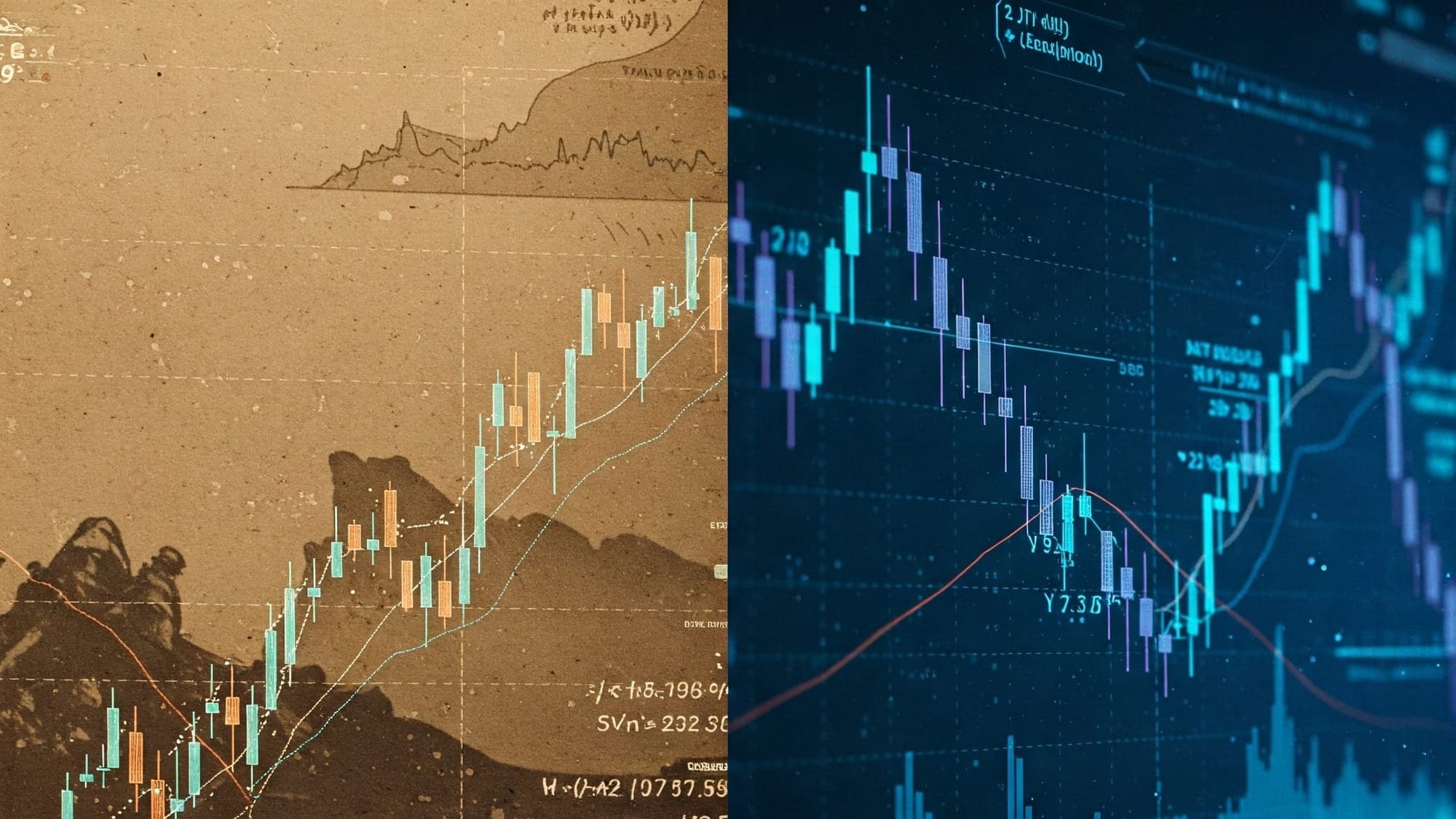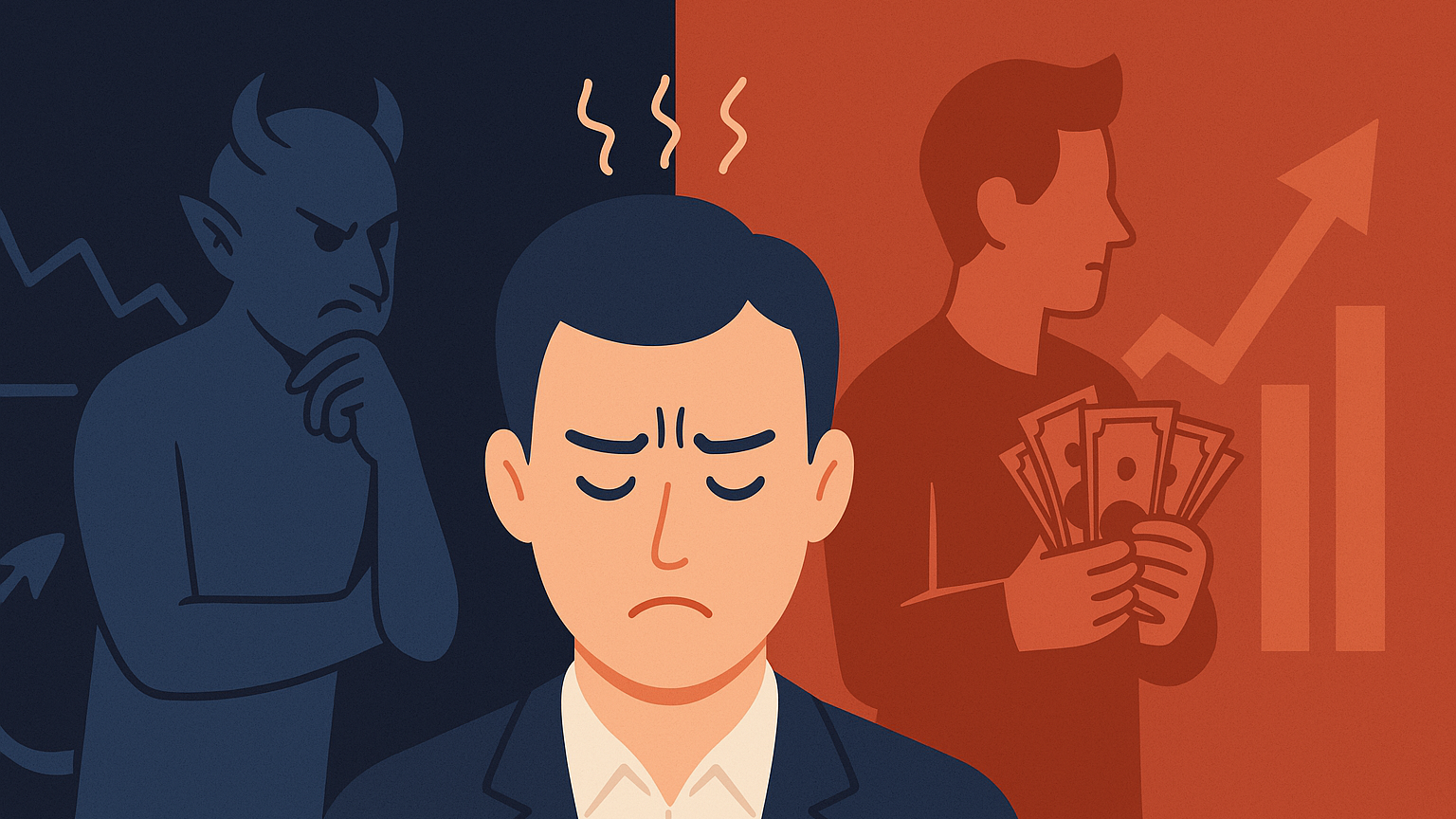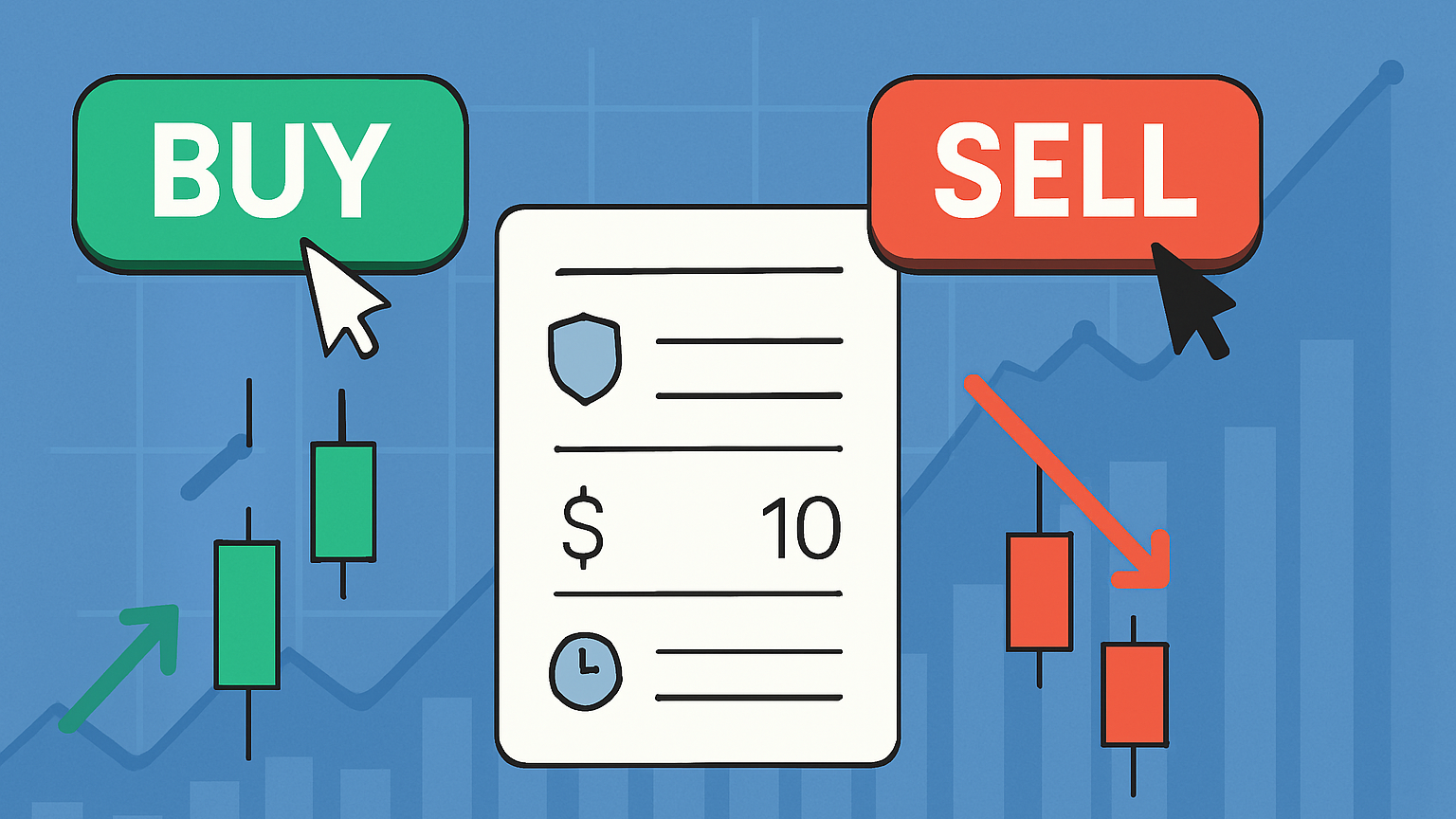Explore the differences between historical and implied volatility skew, and how they impact trading strategies for better decision-making.
The key difference is time focus. Historical skew looks at past price movements, while implied skew reflects market expectations for the future based on current options prices. Both are methods traders use to analyze market behavior and refine strategies.
Quick Overview:
- Historical Skew: Based on actual past price data. Confirms patterns and is used for backtesting and risk assessments.
- Implied Skew: Derived from current options prices. Predicts future volatility and market sentiment.
Quick Comparison Table:
| Feature | Historical Volatility Skew | Implied Volatility Skew |
|---|---|---|
| Time Focus | Past | Future |
| Data Source | Historical price data | Current options pricing |
| Primary Use | Backtesting, risk confirmation | Predicting market sentiment |
| Calculation Model | Statistical variance | Black-Scholes model |
Combining both skews helps traders connect past trends with future expectations, improving decision-making and risk management.
Main Differences Between Skew Types
Past vs Future Analysis
Historical and implied volatility skew differ in their focus on time. Historical skew highlights patterns from observed volatility in the past. On the other hand, implied skew uses current options prices to gauge market expectations, giving a glimpse into potential future volatility [1][3].
Calculation Methods
The way these skews are calculated varies significantly, both in approach and the type of data they use:
| Component | Historical Skew | Implied Skew |
|---|---|---|
| Data Source | Historical price data | Current options prices |
| Primary Model | Statistical variance | Black-Scholes model |
| Time Frame | Fixed historical period | Multiple expiration dates |
| Calculation Base | Actual price movements | Market-driven options pricing |
For historical volatility skew, calculations often rely on 20-30 days of past price movements, analyzing deviations from historical averages [5]. In contrast, implied skew is rooted in market pricing, reflecting current sentiment and expectations.
Prediction vs Confirmation
These skews also differ in how they are used. Implied volatility skew acts as a forward-looking indicator, commonly pricing puts 3-5% higher than similar calls [4]. It helps traders anticipate market sentiment and potential moves.
Meanwhile, historical volatility skew serves as a confirmation indicator. For example, the historical skew for technology stocks often contrasts with that of utility stocks. These patterns help traders interpret implied skew more effectively and refine their strategies. These differences lead to distinct trading approaches.
Trading Uses and Methods
Historical Skew in Strategy Testing
Analyzing historical skew patterns is a powerful method for developing and testing trading strategies. By studying past market behaviors, traders can spot recurring trends and uncover potential opportunities. To make this analysis effective, it's essential to use data from multiple market conditions. For reliable results, traders often focus on expirations between 30 and 60 days, as these typically offer better liquidity and data accuracy [6].
Implied Skew in Options Trading
Implied volatility skew offers valuable insights for options traders, helping them adapt strategies to different market conditions. Here's how it plays out across various approaches:
| Strategy Type | Market Condition | Implementation Approach |
|---|---|---|
| Volatility Arbitrage | Skew Mispricing | Buy and sell options at different strikes |
| Put Ratio Spreads | Steep Negative Skew | Sell multiple OTM puts, buy fewer ATM puts |
| Calendar Spreads | Term Structure Anomalies | Sell near-term options, buy longer-term |
| Volatility Plays | High Volatility | Create price-neutral positions |
For example, traders closely watch S&P 500 options skew. A sudden jump, such as from 5% to 8%, often signals heightened market concerns. These shifts can open up opportunities for specific strategies [3].
Using Both Skew Types Together
Combining historical and implied skew offers traders a more complete picture of market dynamics. Here’s how these two perspectives work together:
1. Compare Current vs Historical Patterns
Historical skew data helps traders identify whether current implied skew levels are unusual. This is especially useful during high-impact events when market behavior can deviate from the norm.
2. Optimize Strategy Selection
By examining how historical skew patterns performed under similar conditions, traders can refine their strategies. For instance, during earnings season, historical trends might guide the choice of strike prices for volatility-based plays.
3. Enhance Risk Management
Using both skew types together improves risk assessment. If current implied skew significantly differs from historical norms, it could indicate the need to adjust strategies or position sizes to manage risk effectively.
This dual approach enables traders to adapt more confidently to changing market conditions.
Volatility Skew Explained
Skew Types Comparison Table
This table outlines the practical differences between Historical Volatility Skew and Implied Volatility Skew, focusing on their use and application:
Comparison Details
| Feature | Historical Volatility Skew | Implied Volatility Skew |
|---|---|---|
| Predictive Value | Confirms past patterns | Reflects expectations for future movements |
| Market Application | Used in backtesting and risk assessments | Applied in options pricing and sentiment evaluation |
| Complexity Level | Relies on basic statistical calculations | Requires familiarity with options pricing models |
These differences shape how each type is used in trading strategies.
When analyzing volatility skews, keep in mind:
- The need for sufficient market liquidity to make implied skew analysis effective.
- The limitations of historical patterns, especially during significant shifts in market conditions.
Summary
Let’s break down the key differences between historical and implied skew, focusing on how each plays a role in trading strategies.
Key Points Recap
Historical skew relies on past price data, while implied skew reflects current market expectations through options pricing. This contrast between recorded trends and forward-looking pricing is crucial for strategies based on volatility.
Why Combining Both Matters
Looking at both historical and implied skew offers two major advantages for traders:
Risk Management: Comparing past trends with current implied skew can highlight potential market mispricing. Metrics like risk reversals act as important benchmarks for gauging market sentiment [7].
Strategy Building: Using both perspectives allows traders to:
- Test their assumptions
- Fine-tune their positions
- Improve timing for trades
With the right approach, this combined method becomes a practical asset for trading decisions.
FAQs
What is the difference between historical volatility and implied volatility?
Historical volatility looks at how much a price has moved in the past, using standard deviation to measure those changes. On the other hand, implied volatility focuses on what the market expects to happen, based on current options prices and models like Black-Scholes.
Here’s a quick breakdown:
- Historical volatility: Tracks actual price movements from the past using standard deviation.
- Implied volatility: Comes from current options prices and reflects market predictions about future price changes.
- Historical volatility gives you a snapshot of past market behavior.
- Implied volatility offers insights into what traders think might happen next.
This difference ties into the analytical approach discussed earlier.







